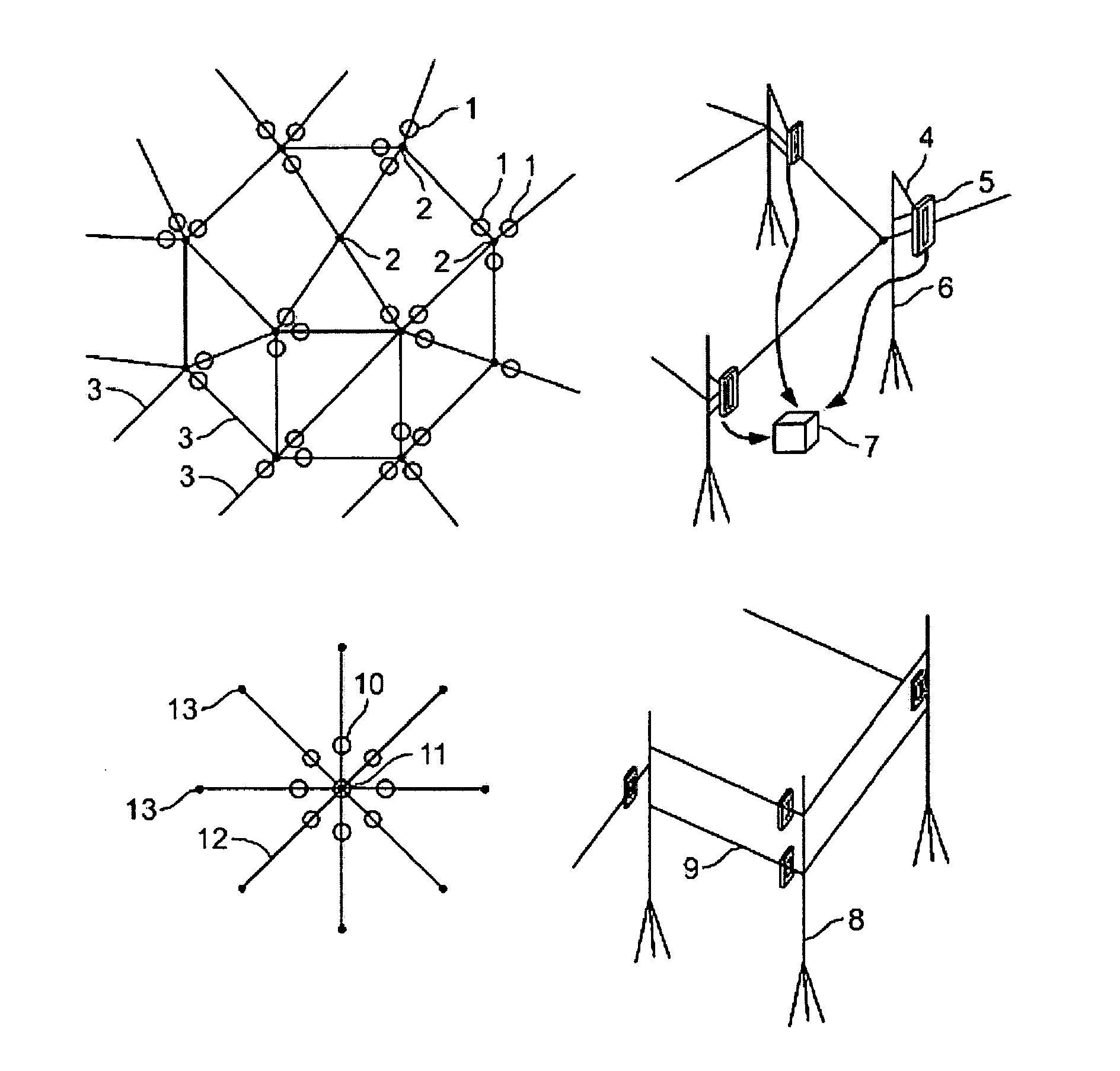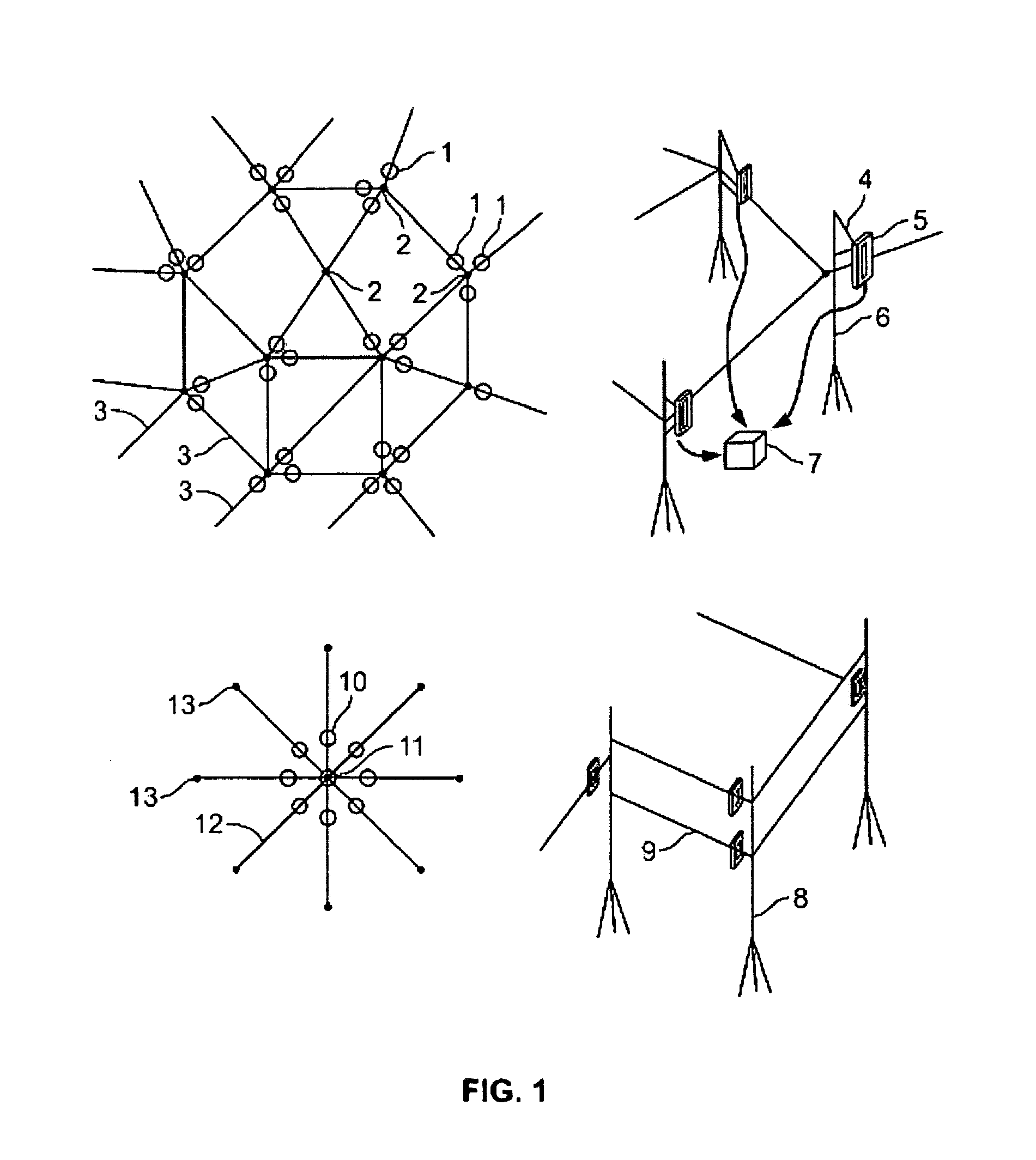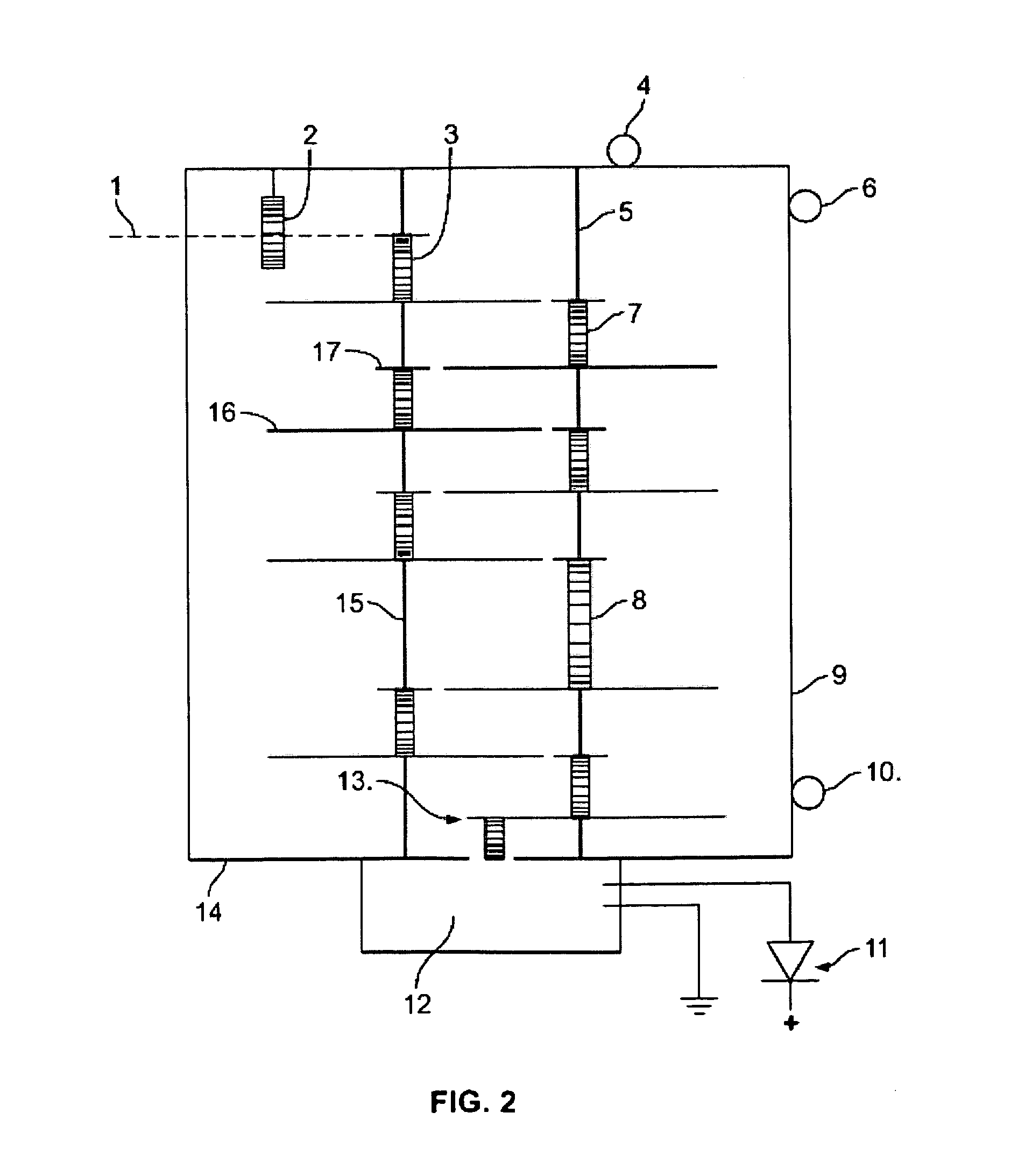Distributed system of electrical generators utilizing wind driven natural motion of trees
a distributed system and generator technology, applied in the direction of electric generator control, machines/engines, mechanical equipment, etc., can solve the problems of large networks of small generators powered by swaying trees, no approach has been made to use wind driven swaying trees or large networks of small generators. , to achieve the effect of reducing environmental impact, reducing maintenance costs, and simple construction
- Summary
- Abstract
- Description
- Claims
- Application Information
AI Technical Summary
Benefits of technology
Problems solved by technology
Method used
Image
Examples
Embodiment Construction
[0123]FIG. 1 are schematic diagrams of examples of how various stands of trees might be networked or “farmed” and of how the pull-retract generators (PRGs) might be configured. Points 1.-3. refer to a system that presumes all trees are of the same species and more or less of the same age, size and flexibility. These trees would be trimmed (i.e., some branches might be cut and some smaller trees may be removed) so that their saddles could all be located at a uniform height and the distribution of PRGs would be that of a fairly uniform lattice. Points 10.-13. refer to a possible configuration for a stand of trees that includes some older, larger trees and others that are young, the older and larger more rigid and the younger and thinner more flexible. Points 8.-9. show how tall trees might support multiple PRGs. Coppiced units can be farmed separately. As is nature, the variety of e-Tree farm configurations is unlimited.
[0124]FIG. 2-FIG. 6 are diagrams of a pull-retract generator (PRG...
PUM
 Login to View More
Login to View More Abstract
Description
Claims
Application Information
 Login to View More
Login to View More - R&D
- Intellectual Property
- Life Sciences
- Materials
- Tech Scout
- Unparalleled Data Quality
- Higher Quality Content
- 60% Fewer Hallucinations
Browse by: Latest US Patents, China's latest patents, Technical Efficacy Thesaurus, Application Domain, Technology Topic, Popular Technical Reports.
© 2025 PatSnap. All rights reserved.Legal|Privacy policy|Modern Slavery Act Transparency Statement|Sitemap|About US| Contact US: help@patsnap.com



